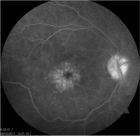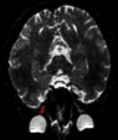Current Issue (Volume - 8 | Issue - 3)
Atypical Anti-GBM with ANCA Vasculitis- A Rarest of the Rare Entity: Index Case from Eastern India
Published on: 13th September, 2024
Anti-glomerular basement membrane (GBM) antibody glomerulonephritis is an extremely rare glomerular disease. Around 90% of the patients are positive for serum anti-GBM antibodies while up to 10% can be negative. In such patients, only a kidney biopsy can reveal the anti-GBM disease it is then labeled as an atypical anti-GBM disease. Though anti-GBM disease can be associated with Anti Neutrophil Cytoplasmic Antibodies (ANCA) positivity, it is extremely rare to find atypical anti-GBM with ANCA positivity so much so that till now there are very few such cases reported from across the world.The case presented here is one such case where the patient presented with adult-onset nephrotic syndrome features with active urinary sediments and mildly deranged renal function. Myeloperoxidase (MPO) ANCA was positive and it was considered ANCA-associated crescentic glomerulonephritis (GN) but after the renal biopsy the picture was of anti-GBM disease. She was treated with pulse methylprednisolone but her creatinine increased in the meantime and considering anti-GBM she was put on Plasma Exchange (PLEX). She received 5 sessions of PLEX after which her renal function improved. She was also planned for Rituximab which could not be given due to local infection. As there are no protocols for treating such cases because of the extremely rare nature of the presentation, this case will increase the understanding of such presentations for the clinicians. This will help to plan for building the approach for such cases.
Anatomo-clinical and Etiological Profile of Nephropathies Biopsied in the Nephrology Department of the Thies Regional Hospital (Senegal)
Published on: 30th September, 2024
Introduction: In many developing countries, particularly in Africa, the use of renal biopsy (RB) in clinical nephrology is severely lacking. The objectives were to describe the anatomoclinical and etiological profile of these biopsied nephropathies, as well as the factors associated with the etiology of the nephropathies.Patients and method: This was a retrospective descriptive and analytical study from 1 April 2020 to 30 October 2022. The patients were selected from the renal biopsy register of the nephrology department of the Thiès Regional Hospital. Sociodemographic, clinical, biological, and histological parameters were studied.Results: 75 renal biopsies were included. The mean age was 33.3 ± 14.8 years, with a male predominance (65.3%). The main indications were nephrotic syndrome in 50.67% of cases. RB was adequate in 82.7%, inadequate in 13.3%, and borderline in 4%. Glomerular nephropathies predominated, with focal segmental glomerulosclerosis (FSGS) in 34.7%, membranous nephropathy (MN) in 17.3%, minimal change disease (MCD) in 10.67%, extracapillary glomerulonephritis (ECGN) in 5.3% and lupus nephritis (LN) in 3.9%. Thrombotic microangiopathy (TMA) was found in 9.3%. Chronic tubulointerstitial nephropathy (CTIN) accounted for 5.3% of all RB and acute tubular necrosis (ATN) for 4%. The etiologies were primary in 48%, secondary in 28%, and undetermined in 24%. In the bivariate analysis, the etiology was correlated with the mean SBP (p = 0.023), the mean level of hemoglobin (p = 0.028), the levels of GFR (p = 0.017), and the type of kidney disease (p = 0.000).Conclusion: Glomerular nephropathy was more frequent and FSGS was the most common histological lesion found. Primary causes predominated. Associated factors were identified to improve patient management.
Serum Levels of the C-terminal Fragment of Fibroblast Growth Factor 23 (C-FGF23) and Hepcidin in Patients with Hemodialysis Undergoing Treatment with a Proline Hydroxylase Domain (PHD) Inhibitor
Published on: 14th October, 2024
Background: We previously reported, for the first time, serum levels of the C-terminal fragment of fibroblast growth factor 23 (C-FGF23) in patients undergoing hemodialysis (HD). Most HD patients have undergone treatment with either recombinant erythropoietin (r-EPO) or hypoxia-inducible factor (HIF) proline hydroxylase domain (PHD) inhibitor, both of which stimulate FGF23 production and cleavage. Methods: This cross-sectional observational study involved analyzing measuring FGF-related parameters and comparing results for subgroups of patients who received either r-EPO and or a PHD inhibitor. Results: No significant difference was observed for iron-related parameters or serum hepcidin levels in both subgroups of patients. Significant differences were found for certain FGF-23-related parameters. Conclusion: Both FGF23 production and cleavage were stimulated more in patients treated with the PHD inhibitor than in patients treated with r-EPO.
Pseudocalcinosis Tumorale (Teutschlander Disease) in Chronic Hemodialysis Patients
Published on: 24th October, 2024
Pseudotumoral calcinosis (CPT) is a condition characterized by the deposition of calcium phosphate crystals in the periarticular tissues, forming large calcified masses. Although the pathophysiology of CPT is not fully understood, an increase in the calcium-phosphate product beyond the precipitation threshold and severe hyperparathyroidism appear to play a significant role. Treatment remains controversial, with surgical excision often recommended. We report a case of CPT in a 74-year-old diabetic patient undergoing chronic hemodialysis who experienced progressively worsening pain in the left hip for six months, along with mobility difficulties. A CT scan revealed a calcified mass on the posterior thigh, likely explaining the electric shock-like pain, as well as compression of the superficial femoral artery causing decubitus pain resembling critical limb ischemia. The biological assessment showed elevated calcium-phosphate levels and hyperparathyroidism. Surgical excision is not indicated due to the mass’s proximity to vascular and nerve structures. This case highlights the diagnostic and therapeutic challenges of CPT, emphasizing the need for iterative angioplasties, considering that this condition is rare in chronic hemodialysis patients with calcified periarticular masses.
Hypercalcemia due to Elevated 1,25 dihydroxyvitamin D in Tophaceous Gout - Case Report and Literature Review
Published on: 22nd November, 2024
Granulomatous diseases can cause hypercalcemia due to elevated 1,25-dihydroxyvitamin D through the production of 1-α hydroxylase by macrophages in the granulomas. Tophaceous gout is not considered to cause this picture. However, there are a few case reports of this occurrence in tophaceous gout, as well as the description of intense 1-α hydroxylase activity in granulomas of tophi in gout patients. We review this literature, and we report a well-documented case of hypercalcemia with elevated serum 1,25 dihydroxyvitamin D in a patient with extensive tophaceous gout and tophi loaded with granulomas. An extensive work-up ruled out other causes of hypercalcemia and granulomatous diseases. Prednisone corrected the chemical abnormalities. Diffuse tophaceous gout should be considered a rare cause of hypercalcemia due to excessive 1,25 dihydroxy vitamin D.

HSPI: We're glad you're here. Please click "create a new Query" if you are a new visitor to our website and need further information from us.
If you are already a member of our network and need to keep track of any developments regarding a question you have already submitted, click "take me to my Query."

























































































































































